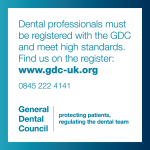Braces and Jaw Surgery
Orthodontic treatment alone is not always able to improve the positions of the teeth and jaws in cases such severe class 3 and class 2 malocclusions. In these cases movement of the jaws may be considered. This operation, carried out by a surgeon, is called orthognathic surgery. At Brockley House Orthodontics there is a close link with local maxillofacial surgeons and the team have successfully treated patients together over more than 20 years.
Orthognathic surgery (jaw surgery) may be recommended to change the position of the upper jaw, lower jaw or both jaws. The jaws may be moved to place them in the correct position to provide a functioning bite. Movement of the jaws may also enhance the facial appearance and improve the fit of the teeth. Each case is different and the planning for jaw surgery and braces is specific to each patient. The orthodontist and the surgeon work closely together and agree a plan. Planning is carried out using x rays, specialised software, photographs and models of the teeth.
Class 3 jaw relationship
In orthognathic surgery cases orthodontic braces are used to line up the teeth with respect to each jaw so that following surgery the teeth fit together. The braces remain in position during the operation and after the operation they are used to fit the teeth together. Jaw surgery is usually carried out from inside the mouth and the maxillofacial surgeon carrying out the surgery provides details about the surgery. Treatment usually takes about twenty-four to thirty-six months but failed and cancelled appointments or repeated breakages lengthen the treatment time. During treatment with braces and jaw surgery it is important to see your family dentist for dental checkups and routine dental treatment
Class 2 jaw relationship
The British Orthodontic Society has useful information about jaw surgery



